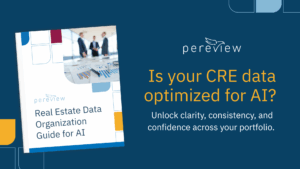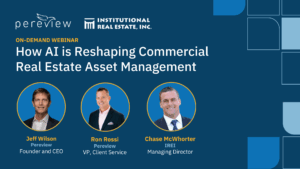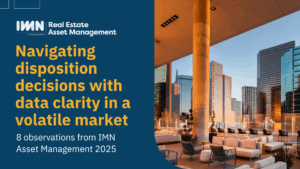You’re probably familiar with the term “dirty data.” But even if you are aware of how pervasive the problem is, you might have wondered, “how does data get dirty in the first place?”
How Does Data Get Dirty?
There are many paths to dirty data, but most common are a lack of data governance, a preponderance of siloed processes, and inadequate software solutions.
Data governance is multi-legged stool, with one being data integrity. Processes for capturing, cataloguing, and reporting data must be consistent across your organization. If, for instance, your asset manager defines a certain term differently than the portfolio manager (and neither is aware of the difference), you will have inaccurate data.
It’s safe to assume that lack of data governance broadly – and lack of data integrity specifically – represents the single greatest contributor to dirty data.
Siloed processes can contribute to that lack of data governance. There’s no reason for asset managers and portfolio managers to be out of sync with one another, but it happens often.
Say for instance that an asset manager wants to execute a tenant exposure report or a top-ten clients report. Pressured by time, she/he decides to create a proprietary, off-line procedure to expedite the process. It works – or at least it works until that asset manager leaves the firm and takes their proprietary knowledge with them.
What motivated the asset manager to go rogue? If the firm was utilizing inadequate software solutions to manage asset data, then their reporting was probably more painful and time-consuming than it should have been.
Alternatives to Excel
According to a recent survey, roughly three in every four commercial real estate firms are using Microsoft Excel to manage their core investments. For many of these firms, this represents hundreds, perhaps thousands, of spreadsheets spread across multiple locations. Such a scenario leads to two big problems: one, it makes work more complicated and firms less efficient; and two, it increases a firm’s organizational and reputational risk.
Excel is popular because it’s flexible and widely accessible. But that flexibility is a double-edged sword when it comes to creating a database. Because it lacks rigid structure around data governance, employees have the implicit ability to invent shortcuts that undercut data integrity.
If not Excel, then what? Many CRE firms are realizing the potential of integrated, cloud-based management solutions to manage their critical data. These solutions (like Pereview) provide a secure, integrated platform for data across the entire life of the asset.
Pereview is the antidote for dirty data.
An all-your-data-in-one-place, commercial real estate asset software solution, Pereview is the only Life of the Asset® platform on the market today. It integrates siloed systems and processes, allows for push-button reporting, creates a single source of truth, and establishes standard workflows and guidelines for asset and data management.
Let’s chat about how we can ensure that your data is clean, accessible, and secure.



